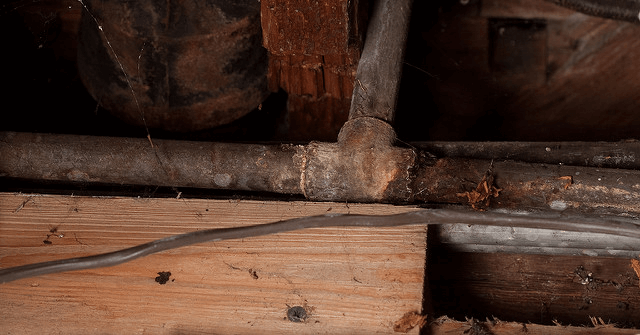3 Causes of Water Corrosion in Your Home
Water corrosion occurs when water reacts with refined metal or another vulnerable material and returns that material to a more stable state. Rust is one of the most recognizable examples of corrosion, but several sources of corrosive water exist. In the home, water corrosion can have a negative impact on your plumbing system’s integrity and on your family’s health.
In the Boulder and Denver areas, most homes feature plumbing systems made from either copper or plastic pipes. Although both of these materials present fewer corrosive dangers than lead or iron piping, find out how the following three sources of water corrosion can still impact your home’s plumbing system.
Microbiologically Induced Corrosion (MIC)
 Water in the Denver area is more alkaline than acidic. According to Brian Oram of the Water Research Center, microbiologically induced corrosion, or MIC, causes up to 30 percent of pipe corrosion.
Water in the Denver area is more alkaline than acidic. According to Brian Oram of the Water Research Center, microbiologically induced corrosion, or MIC, causes up to 30 percent of pipe corrosion.
MIC occurs when bacteria flourish in the home’s plumbing system and corrode the pipes. Although most microbes associated with MIC are not harmful to humans, the corrosion can weaken the pipes and introduce metal into the water supply. As the pipes become corroded, you might notice low water pressure and a foul taste in the water, both of which suggest that microbial activity is present.
Plastic Corrosion
Most water corrosion issues in the home stem from metal pipes, but inferior or substandard plastic pipes can also become corroded, according to the Penn State College of Agricultural Sciences. Plastic PVC pipes that have received approval for transporting drinking water, however, prove resistant to corrosion.
A licensed, experienced plumber can inspect your pipes and let you know if any substandard materials exist in your home. If they do, replacing your pipes can improve drinking water quality and remove the threat of corrosive water. While water treatment solutions can offer a faster, cheaper workaround, they don’t resolve the problem permanently.
Copper Corrosion
Although copper corrosion occurs frequently in areas with acidic water, high levels of alkalinity in water can also cause corrosive damage. You might notice blue or green stains around the sink, tub, and shower drains in your home. These stains can point to possible copper pipe corrosion.
According to Advanced Water Systems of Soquel, California, copper pipe corrosion can cause piping to fail within as few as 10 years. As corrosion progresses, electronic activity increases, dissolving the copper into the water flow. You might taste a bitterness in your drinking water after this process starts.
Pinhole leaks become common in copper piping as the metal deteriorates. You might experience a loss of water pressure, especially for hot water, or reduced flow when you first turn on the faucet in the morning. Damage from copper corrosion sometimes also causes clogs in water heaters as the residual metal travels through the plumbing system.
Many homeowners don’t think about their pipes or plumbing systems until they notice a severe problem. Have your plumbing inspected and serviced regularly to prevent costly issues and keep your drinking water free from contaminants.




